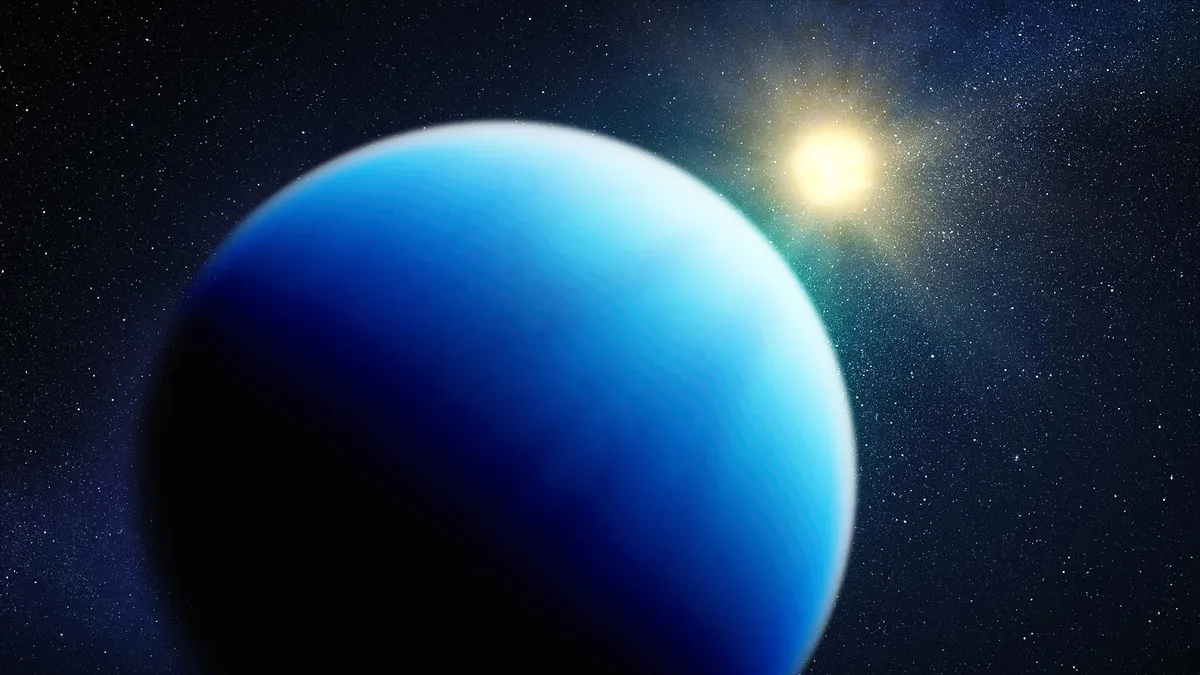
Sub-Neptunes may not orbit our Sun, yet they are prevalent throughout our galaxy. These intriguing planets, which are larger than Earth but smaller than Neptune, represent the most common type of exoplanet discovered to date. Despite their abundance, a significant amount about them remains shrouded in mystery, particularly concerning their thick, cloudy atmospheres. Fortunately, NASA’s James Webb Space Telescope (JWST) is beginning to shed light on these enigmatic worlds. A recent observation of one such planet, TOI-421 b, has provided an unusually clear view of its atmospheric composition.
Scientists from the University of Maryland have eagerly awaited this moment. With the advanced technology of the JWST, they now have the capability to study the atmospheres of sub-Neptunes in unprecedented detail. Eliza Kempton, a lead researcher, expressed her excitement: “I had been waiting my entire career for Webb so that we could meaningfully characterize the atmospheres of these smaller planets.” Understanding the atmospheres of sub-Neptunes is crucial for gaining insights into their formation and evolution, particularly since these planets do not exist within our solar system.
Initially identified by NASA’s Kepler space telescope, sub-Neptunes were a surprising discovery. As researchers delve deeper, they are racing to uncover why these planets are so common and what secrets their thick atmospheres may conceal.
Observing sub-Neptunes poses a challenge for astronomers. These planets are larger than Earth but significantly smaller and cooler than gas giants like Jupiter, which makes their faint signals difficult to detect. Prior to the JWST, most sub-Neptunes exhibited what is known as a “flat transmission spectrum,” which indicates a lack of visible chemical fingerprints—essentially presenting a blank line to researchers. This phenomenon suggested that haze or clouds were obscuring their atmospheres. However, TOI-421 b appeared to be different.
“Why did we observe this planet, TOI-421 b? It’s because we thought that maybe it wouldn’t have hazes,” Kempton confirmed. Research indicated that planets within a specific temperature range were less likely to be enshrouded by haze. The critical temperature threshold is approximately 1,070 degrees Fahrenheit (577 degrees Celsius). Below this temperature, methane reacts with sunlight, forming haze. However, TOI-421 b, with a surface temperature of around 1,340 degrees Fahrenheit (727 degrees Celsius), exceeded this threshold, providing hope for a clearer atmospheric view, which the JWST ultimately confirmed.
Once the researchers gained a clear view of TOI-421 b’s atmosphere, they detected signs of water vapor along with indications of carbon monoxide and sulfur dioxide. Interestingly, they found that gases such as methane and carbon dioxide were absent. The most surprising discovery was a significant presence of hydrogen. Brian Davenport, a Ph.D. student leading the data analysis, commented, “We saw spectral features that we attribute to various gases, and that allowed us to determine the composition of the atmosphere.” Unlike many previously observed sub-Neptunes, whose atmospheres were obscured by haze, TOI-421 b presented a clearer picture.
The presence of a hydrogen-rich atmosphere challenged the researchers' expectations. “We had recently wrapped our minds around the idea that those first few sub-Neptunes observed by Webb had heavy-molecule atmospheres, so that had become our expectation, and then we found the opposite,” Kempton noted. This suggests that TOI-421 b may have taken a unique path in its formation and evolution compared to other sub-Neptunes.
The atmospheric composition of TOI-421 b also bore similarities to the gases found in its host star. Kempton explained, “If you just took the same gas that made the host star, plopped it on top of a planet’s atmosphere, and put it at the much cooler temperature of this planet, you would get the same combination of gases.” This observation aligns more closely with what we see in the gas giants of our own solar system, rather than with other sub-Neptunes previously studied by the JWST. Another distinguishing factor is that TOI-421 b orbits a Sun-like star, while most other observed sub-Neptunes have orbited smaller red dwarf stars. This difference may account for some of the unique features seen in TOI-421 b.
To determine whether TOI-421 b is an anomaly or part of a broader trend among sub-Neptunes, scientists are keen to observe more planets within similar temperature ranges. If additional hot, clear-skied sub-Neptunes are discovered, it could provide valuable insights into their formation and composition. Davenport emphasized, “We’ve unlocked a new way to look at these sub-Neptunes. These high-temperature planets are amenable to characterization. By studying sub-Neptunes of this temperature, we’re perhaps more likely to accelerate our ability to learn about these planets.”
One thing is certain: TOI-421 b is no ordinary planet. With the help of the JWST, scientists are just beginning to uncover the secrets hidden behind the haze. The full study detailing these findings has been published in The Astrophysical Journal Letters.
—– Like what you read? Subscribe to our newsletter for engaging articles, exclusive content, and the latest updates. Check us out on EarthSnap, a free app brought to you by Eric Ralls and Earth.com. —–